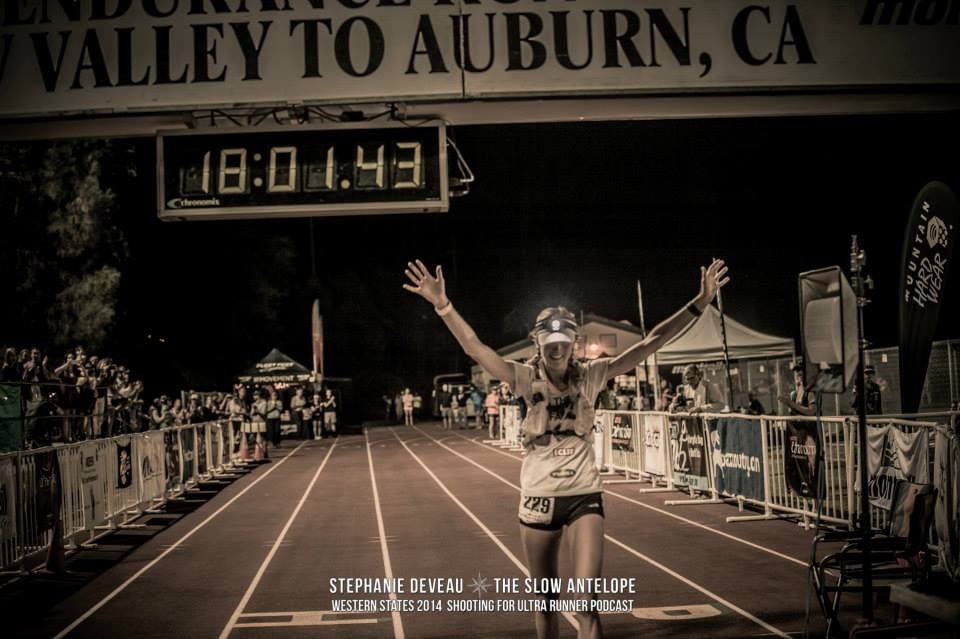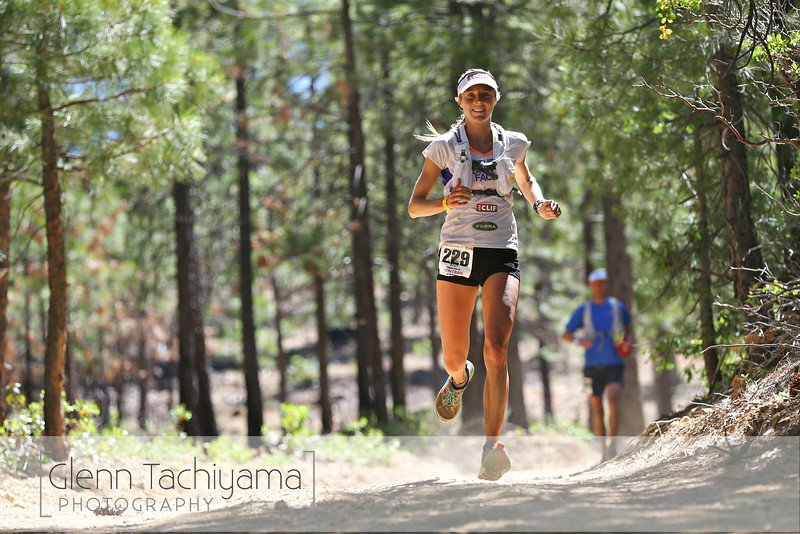
The Western States 100 mile endurance run is one of the most coveted endurance races in the country. Starting in Squaw Valley and ending in Auburn, Calif., runners climb more than 18,000 feet and descend roughly 23,000 feet to finish the grueling test of both endurance and mental strength.
This year’s race was held on June 28 and was filled with many current and former cross country skiers, the most notable of which was Stephanie Howe who won the women’s 100 mile with a time of 18 hours 1 minute and 42 seconds. Not only did she finish with the fourth fastest female time in race history, it was also the first time that she had ever run 100 miles.
The 30-year-old who currently lives in Bend, Ore. is a former member of the XC Oregon ski team. Howe found much success with XC Oregon, including finishing first three years in a row in Bend’s Pole, Pedal, Paddle and being the top American at the 2011 Norwegian Birkibeiner.
Howe now runs for the NorthFace and owns a coaching and athletic consulting business called Endurance by Stephanie.
FasterSkier caught up with Howe after her victory at Western States to discuss what it was like to win the endurance race and find out how she was able to dominate her first 100-mile.

FasterSkier: How does it feel to win the Western States 100?
Stephanie Howe: Pretty awesome! It’s been a surreal experience. I never thought that I’d win Western States in my first 100-mile race!
FS: I understand you had never run more than 100 k before the race. How did you prepare for such a long distance, especially one that you had never run?
SH: Yes, I had not run more than 100k (62 miles) prior to Western States. Long story short, I was very smart with my training. I’ve had some injuries in the past (last year I was sidelined for about 3-4 months), so I took a new approach this year. I know that I respond best to lower mileage. Going into the late spring I was running about 50 miles/week. While that felt good and allowed me to race well at the 50-mile distance, it was not enough for a 100-mile race. After Lake Sonoma in April, I started to slowly increase my mileage. To prevent injuries I also simultaneously dropped my intensity (speed work). I had a few key runs that prepared me for Western States, including back to back 40 mile runs on Rogue River trail, a 52 mile run on the WS course with the last 8 miles at tempo pace, and the Western States Memorial Camp training weekend, where I ran 85 miles in 3 days. So I definitely got some big weeks in, with my highest week around 140 miles.
BUT, the most important thing was that I recovered between those big training weeks. I allowed my body to absorb the training, rather than push through week after week of hard running. Many athletes underestimate the importance of rest, which is where all the fitness gains occur! I also included strength training at least once a week (heavy weights) and yoga at least 1-2 times per week as part of my training plan. Other than that I tapered well and had a good nutrition plan going into Western States. I’m lucky in that I have a background in exercise physiology and sports nutrition. I can apply what I know to my training and racing and it seems to work pretty well.
FS: What factors led to your success in the race?
SH: I was well trained, I tapered well, and I ran a smart race. Probably the biggest thing I did right during the race was that I started conservative and I fueled well. I ran the first 2 hours at a very comfortable pace, not concerned about anyone but myself. I didn’t chase the leaders up the first big climb (2,500 ft in 3 miles) and stayed within myself for the whole race. I also started fueling early and often, aiming for 250-300 calories an hour. That sure gets tough after 10 hours of running, but I just kept on a consistent schedule.
FS: Once you were in lead what was going through your mind? Were you worried about anyone behind you?

SH: I took the lead around 33 miles and thought “Wow it’s cool to be leading Western States!” I didn’t read too much into though because there was still almost 70 miles of racing left! I tried to just focus on my race and keep in control. Once I got to mile 56 I got a backsplit I was in the lead by about 20 minutes. That totally shocked me! Again, I was thrilled but still was only half way through the race. Once I got to the river, around mile 78 I thought for the first time that I might be able to hold my lead. It was exciting! I was pretty tired by then, but I just kept on moving. The last 20 miles were tough- my quads were shot, I was exhausted, and I didn’t want to eat anything. I’m pretty stubborn and mentally tough, so I just pushed on. 100 milers are such a different kind of race, a slow suffer, if you will. So I just put my head down and slowly grinded it out to the finish.
FS: How did you feel crossing the finish line in first?
SH: That was the best feeling ever! I felt like I was floating around the track in Auburn. It was probably the most exciting thing I’ve ever done. I definitely will never forget the feeling of rounding the track, high fiving lots of little kids, and crossing the finish line first. Wow, what a day!
Lander Karath
Lander Karath is FasterSkier's Associate Editor from Bozeman, Montana and a Bridger Ski Foundation alumnus. Between his studies at Middlebury College in Vermont, he is an outdoor enthusiast and a political junkie.



